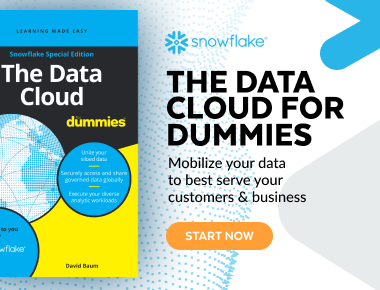A data science pipeline is the set of processes that convert raw data into actionable answers to business questions. Data science pipelines automate the flow of data from source to destination, ultimately providing you insights for making business decisions.
Benefits of Data Science Pipelines
Data science pipelines automate the processes of data validation; extract, transform, load (ETL); machine learning and modeling; revision; and output, such as to a data warehouse or visualization platform. A type of data pipeline, data science pipelines eliminate many manual, error-prone processes involved in transporting data between locations which can result in data latency and bottlenecks.
The benefits of a modern data science pipeline to your business:
- Easier access to insights, as raw data is quickly and easily adjusted, analyzed, and modeled based on machine learning algorithms, then output as meaningful, actionable information
Faster decision-making, as data is extracted and processed in real time, giving you up-to-date information to leverage
Agility to meet peaks in demand, as modern data science pipelines offer instant elasticity via the cloud
Data Science Pipeline Flow
Generally, the primary processes of a data science pipeline are:
Data engineering (including collection, cleansing, and preparation)
Machine learning (model learning and model validation)
Output (model deployment and data visualization)
But the first step in deploying a data science pipeline is identifying the business problem you need the data to address and the data science workflow. Formulate questions you need answers to — that will direct the machine learning and other algorithms to provide solutions you can use.
Once that’s done, the steps for a data science pipeline are:
Data collection, including the identification of data sources and extraction of data from sources into usable formats
Data preparation, which may include ETL
Data modeling and model validation, in which machine learning is used to find patterns and apply rules to the data via algorithms and then tested on sample data
Model deployment, applying the model to the existing and new data
Reviewing and updating the model based on changing business requirements
Characteristics of a Data Science Pipeline
A robust end-to-end data science pipeline can source, collect, manage, analyze, model, and effectively transform data to discover opportunities and deliver cost-saving business processes. Modern data science pipelines make extracting information from the data you collect fast and accessible.
To do this, the best data science pipelines have:
Continuous, extensible data processing
Cloud-enabled elasticity and agility
Independent, isolated data processing resources
Widespread data access and the ability to self-serve
High availability and disaster recovery
These characteristics enable organizations to leverage their data quickly, accurately, and efficiently to make quicker and better business decisions.
Benefits of a Cloud Platform for Data Science Pipelines
A modern cloud data platform can satisfy the entire data lifecycle of a data science pipeline, including machine learning, artificial intelligence, and predictive application development.
A cloud data platform provides:
Simplicity, making managing multiple compute platforms and constantly maintain integrations unnecessary
Security, with one copy of data securely stored in the data warehouse environment and with user credentials carefully managed and all transmissions encrypted
Performance, as query results are cached and can be used repeatedly during the machine learning process, as well as for analytics
Workload isolation with dedicated compute resources for each user and workload
Elasticity, with scale-up capacity to accommodate large data processing tasks happening in seconds
Support for structured and semi-structured data, making it easy to load, integrate, and analyze all types of data inside a unified repository
Concurrency, as massive workloads run across shared data at scale
Snowflake for Data Science Pipelines
Traditional data warehouses and data lakes are too slow and restrictive for effective data science pipelines. Snowflake’s Data Cloud seamlessly integrates and supports the machine learning libraries and tools data science pipelines rely on. Snowpark is a developer framework for Snowflake that brings data processing and pipelines written in Python, Java, and Scala to Snowflake's elastic processing engine. Snowpark allows data engineers, data scientists, and data developers to execute pipelines feeding ML models and applications faster and more securely in a single platform using their language of choice. Near-unlimited data storage and instant, near-infinite compute resources allow you to rapidly scale and meet the demands of analysts and data scientists.


